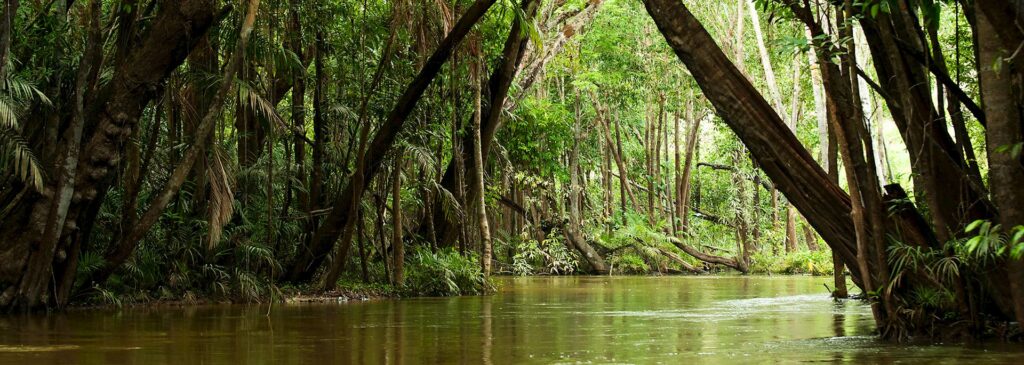There are few places left on Earth that feel truly wild—uncharted, teeming with mystery, and larger than life. The Amazon Rainforest, stretching over 5.5 million square kilometers across nine South American countries, is one of them. It’s not just a forest; it’s a living, breathing organism, often called the “lungs of the planet.” Yet beyond its ecological importance, the Amazon is an experience—vivid, immersive, and utterly humbling.
A World Apart
Flying into the Amazon, one sees an endless canopy of green, an ocean of trees that swallows everything in its path. As the plane descends and you step out into the thick, humid air, the world changes. The sounds are the first thing that strike you—birds crying, insects chirping, monkeys howling. It’s a constant hum of life, layered and complex, like an orchestra without a conductor, each creature following its own rhythm.
Walking into the forest feels like stepping through a portal. Light filters down in green-tinted rays, broken by broad leaves and vines that twist like serpents. The ground is often damp and rich with the scent of decay—a reminder that in the rainforest, death and life are in constant conversation. Every fallen tree feeds the soil that nourishes new growth. It’s a perfect cycle, centuries old and still unfolding.
Encounters with the Wild

Exploring the Amazon means relinquishing control. You follow muddy trails carved by the feet of animals and the machetes of guides. Each turn might reveal a flash of color—a scarlet macaw, a blue morpho butterfly, or the elusive jaguar. Even standing still, you are not alone. Leafcutter ants march purposefully in endless columns, while camouflaged frogs cling to trees like knotted wood.
One morning, we paddled silently down a narrow tributary of the Rio Negro. The water was black, reflective like obsidian, bordered by dense vegetation. Our guide pointed suddenly—a caiman floated motionless, eyes just above the surface. Minutes later, pink river dolphins surfaced near our canoe, their presence ghostly in the dark water. These are creatures of myth and mystery, as magical in real life as they are in legend.
Meeting the Guardians of the Forest
No journey to the Amazon is complete without acknowledging its people. Indigenous tribes have lived in harmony with the forest for millennia, and their knowledge of this vast ecosystem is unmatched. We visited a small village where locals taught us how to identify medicinal plants and use natural dyes. A woman showed us how she weaves baskets from palm fronds, a skill passed down through generations.
These communities are the true guardians of the forest, facing growing threats from illegal logging, mining, and encroaching development. Their stories are not just about survival but resilience—a testament to the strength of culture rooted deeply in nature.
The Fragile Giant

Despite its grandeur, the Amazon is under siege. Climate change, deforestation, and habitat destruction are accelerating. In the past few decades, massive areas of rainforest have been lost, affecting biodiversity, water cycles, and indigenous ways of life. What happens in the Amazon doesn’t stay there—it influences rainfall patterns across South America and affects global carbon levels.
Walking through parts of the forest scarred by logging, the silence is deafening. No birds, no insects, just the creak of dead wood underfoot. It’s a stark reminder of the fragility of even the mightiest ecosystems.
Why We Must Care

Being “lost in the green” is not just about adventure—it’s about connection. The Amazon teaches us how interwoven our planet truly is. Trees that help stabilize our climate. Rivers that nourish vast regions. Cultures that embody sustainability not as a trend but a way of life.
To explore the Amazon is to witness the immense beauty and complexity of the natural world. It is a place of awe, but also urgency. The forest doesn’t need saving because it’s beautiful; it needs saving because it sustains us all.
Final Reflections
When we left the rainforest, my clothes were damp, my boots caked in mud, and my journal heavy with scribbled notes and memories. But what I carried most was a sense of scale—of how small we are in the face of such grandeur, and how much responsibility we hold.
“Lost in the green” is not about being misplaced. It’s about rediscovery. Of nature. Of balance. Of our place in a much larger story.
